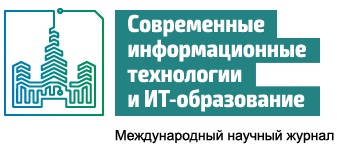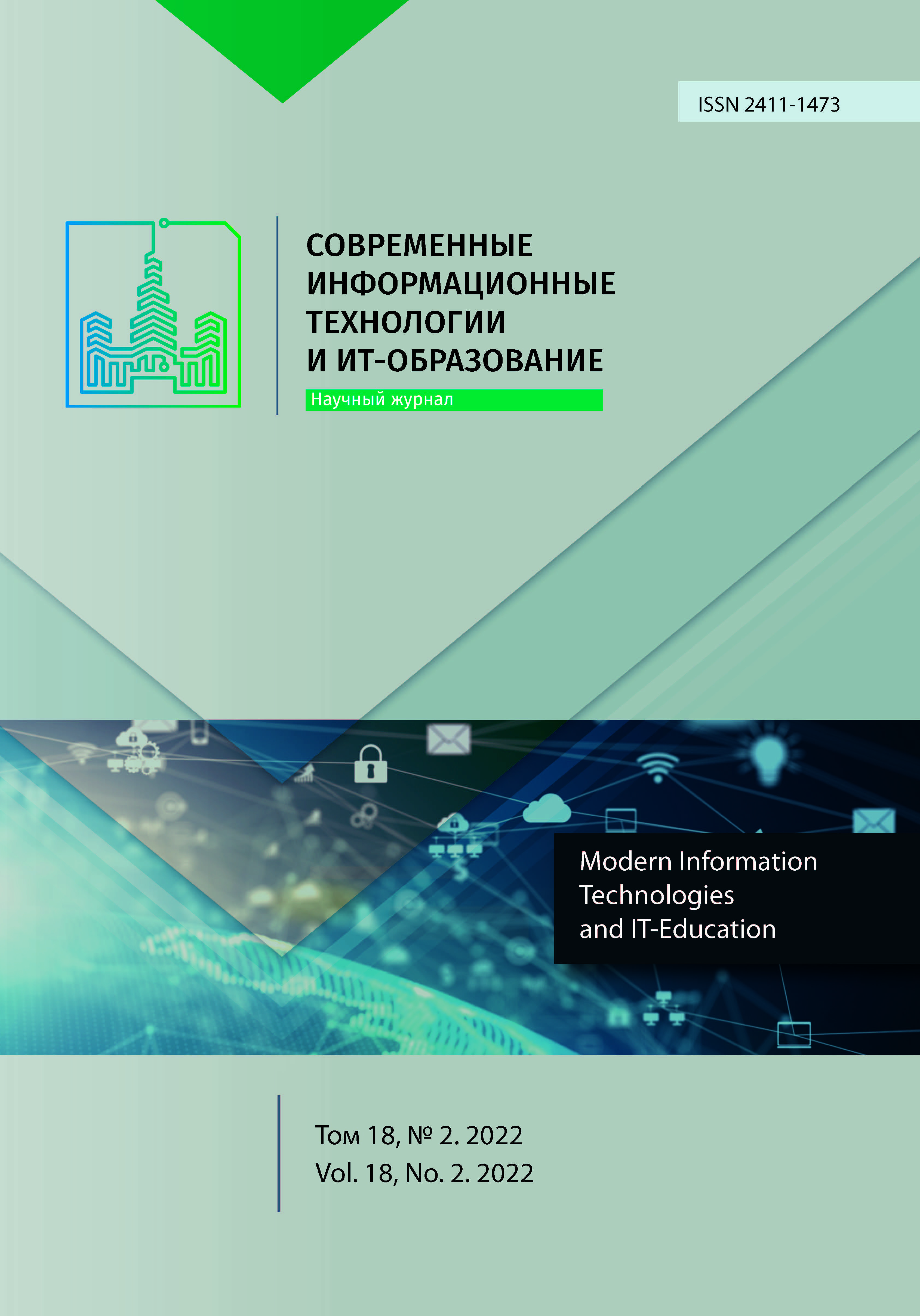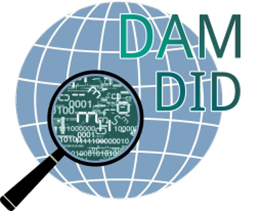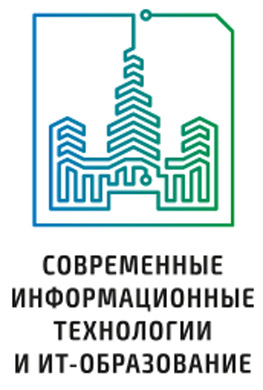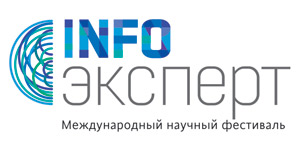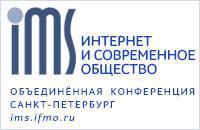Построение искусственной иммунной системы для реализации искусственного интеллекта в компьютерной игре
Аннотация
В данной статье представлена разработка и исследование модели формализации процесса принятия решений в компьютерной игре с использованием методов искусственного интеллекта. В настоящее время с этой целью созданы и применяются различные искусственные нейронные сети и экспертные системы.
Анализ данных работ показал, что данные методы показывают хорошие результаты, однако имеют ряд недостатков, самыми существенным из которых является сложность организации и большое время, затрачиваемое на обучение нейронной сети. Таким образом, ставится проблема разработки новых алгоритмов, сравнимых по скорости принятия решения с искусственными нейронными сетями и экспертными системами и при этом обладающих меньшим временем обучения. Одним из путей решения этой задачи является разработка модели принятия решений на основе искусственной иммунной системы. Целью работы является разработка и исследование модели формализации процесса принятия решений в компьютерной игре с использованием методов искусственного интеллекта.
Для демонстрации возможностей применения искусственной иммунной системы в компьютерных играх была выбрана игра "точки". Данная игра относится к разряду логических, в которой по умолчанию могут играть только два человека. В данной игре позиционное стратегическое планирование сочетается с тактическим перебором вариантов. Для организации поиска решения в дереве решений был создан игровой искусственный интеллект с применением методов, основанных на принципах иммунной системы.
Искусственная иммунная система представляет идеализированный вариант естественного аналога и воспроизводит ключевые составляющие природного процесса: отбор лучших антител популяции в зависимости от степени их аффинитета (близости) к антигену, клонирование антител, мутация антител.
Литература
2. He W. Computer Games Based on Artificial Intelligence. In: Jansen B.J., Liang H., Ye J. (eds.) International Conference on Cognitive based Information Processing and Applications (CIPA 2021). Lecture Notes on Data Engineering and Communications Technologies. Vol. 85. Springer, Singapore; 2022. p. 847-851. (In Eng.) doi: https://doi.org/10.1007/978-981-16-5854-9_112
3. Mateas M. Expressive Intelligence: Artificial Intelligence, Games and New Media. In: Basili R., Pazienza M.T. (eds.) AI*IA 2007: Artificial Intelligence and Human-Oriented Computing. AI*IA 2007. Lecture Notes in Computer Science. Vol. 4733. Springer, Berlin, Heidelberg; 2007. p. 2. (In Eng.) doi: https://doi.org/10.1007/978-3-540-74782-6_2
4. Liapis A. Artificial Intelligence for Designing Games. In: Machado P., Romero J., Greenfield G. (eds.) Artificial Intelligence and the Arts. Computational Synthesis and Creative Systems. Springer, Cham; 2021. p. 277-310. (In Eng.) doi: https://doi.org/10.1007/978-3-030-59475-6_11
5. Chan L., Hogaboam L., Cao R. Artificial Intelligence in Video Games and eSports. In: Applied Artificial Intelligence in Business. Applied Innovation and Technology Management. Springer, Cham; 2022. p. 335-352. (In Eng.) doi: https://doi.org/10.1007/978-3-031-05740-3_22
6. Aiolli F., Palazzi C.E. Enhancing Artificial Intelligence in Games by Learning the Opponent’s Playing Style. In: Ciancarini P., Nakatsu R., Rauterberg M., Roccetti M. (eds.) New Frontiers for Entertainment Computing. ECS 2008. IFIP International Federation for Information Processing. Vol. 279. Springer, Boston, MA; 2008. p. 1-10. (In Eng.) doi: https://doi.org/10.1007/978-0-387-09701-5_1
7. Ontañón S., Ram A. Case-Based Reasoning and User-Generated Artificial Intelligence for Real-Time Strategy Games. In: González-Calero P., Gómez-Martín M. (eds.) Artificial Intelligence for Computer Games. Springer, New York, NY; 2011. p. 103-124. (In Eng.) doi: https://doi.org/10.1007/978-1-4419-8188-2_5
8. Cerny V., Dechterenko F. Rogue-Like Games as a Playground for Artificial Intelligence – Evolutionary Approach. In: Chorianopoulos K., Divitini M., Baalsrud Hauge J., Jaccheri L., Malaka R. (eds.) Entertainment Computing ‒ ICEC 2015. ICEC 2015. Lecture Notes in Computer Science. Vol. 9353. Springer, Cham; 2015. p. 261-271. (In Eng.) doi: https://doi.org/10.1007/978-3-319-24589-8_20
9. Plaat A. Intelligence and Games. In: Learning to Play. Springer, Cham; 2020. p. 9-41. (In Eng.) doi: https://doi.org/10.1007/978-3-030-59238-7_2
10. Gong J. Key Technology of Games Based on Artificial Intelligence Technology. In: Xu Z., Parizi R.M., Loyola-González O., Zhang X. (eds.) Cyber Security Intelligence and Analytics. CSIA 2021. Advances in Intelligent Systems and Computing. Vol. 1342. Springer, Cham; 2021. p. 607-614. (In Eng.) doi: https://doi.org/10.1007/978-3-030-70042-3_87
11. Lee Y.J., et al. Self-supervised Contrastive Learning for Predicting Game Strategies. In: Arai K. (eds) Intelligent Systems and Applications. IntelliSys 2022. Lecture Notes in Networks and Systems. Vol. 542. Springer, Cham; 2023. p. 136-147. (In Eng.) doi: https://doi.org/10.1007/978-3-031-16072-1_10
12. Caci B., Dhou K. The Interplay Between Artificial Intelligence and Users’ Personalities: A New Scenario for Human-Computer Interaction in Gaming. In: Stephanidis C., et al. (eds.) HCI International 2020 – Late Breaking Papers: Cognition, Learning and Games. HCII 2020. Lecture Notes in Computer Science. Vol. 12425. Springer, Cham; 2020. p. 619-630. (In Eng.) doi: https://doi.org/10.1007/978-3-030-60128-7_45
13. Giannakos M., Voulgari I., Papavlasopoulou S., Papamitsiou Z., Yannakakis G. Games for Artificial Intelligence and Machine Learning Education: Review and Perspectives. In: Giannakos M. (eds.) Non-Formal and Informal Science Learning in the ICT Era. Lecture Notes in Educational Technology. Springer, Singapore; 2020. p. 117-133. (In Eng.) doi: https://doi.org/10.1007/978-981-15-6747-6_7
14. Cowley B.U. Generalised Player Modelling: Why Artificial Intelligence in Games Should Incorporate Meaning, with a Formalism for so Doing. In: Fang X. (eds.) HCI in Games. HCII 2020. Lecture Notes in Computer Science. Vol. 12211. Springer, Cham; 2020. p. 3-22. (In Eng.) doi: https://doi.org/10.1007/978-3-030-50164-8_1
15. Hubble A., Moorin J., Khuman A.S. Artificial Intelligence in FPS Games: NPC Difficulty Effects on Gameplay. In: Carter J., Chiclana F., Khuman A.S., Chen T. (eds.) Fuzzy Logic. Springer, Cham; 2021. p. 165-190. (In Eng.) doi: https://doi.org/10.1007/978-3-030-66474-9_11
16. Bouzy B., Cazenave T., Corruble V., Teytaud O. Artificial Intelligence for Games. In: Marquis, P., Papini, O., Prade, H. (eds.) A Guided Tour of Artificial Intelligence Research. Springer, Cham; 2020. p. 313-337. (In Eng.) doi: https://doi.org/10.1007/978-3-030-06167-8_11
17. Fan X., Wu J., Tian L. A Review of Artificial Intelligence for Games. In: Liang Q., Wang W., Mu J., Liu X., Na Z., Chen B. (eds.) Artificial Intelligence in China. Lecture Notes in Electrical Engineering. Vol. 572. Springer, Singapore; 2020. p. 298-303. (In Eng.) doi: https://doi.org/10.1007/978-981-15-0187-6_34
18. Dasgupta D., Yu S., Nino F. Recent Advances in Artificial Immune Systems: Models and Applications. Applied Soft Computing. 2011; 11(2):1574-1587. (In Eng.) doi: https://doi.org/10.1016/j.asoc.2010.08.024
19. Cain C.B. Weiqi and Artificial Intelligence: Potential for Strategic Decision Making. In: Lai D. (eds.) U.S.-China Strategic Relations and Competitive Sports. Palgrave Macmillan, Cham; 2022. p. 325-359. (In Eng.) doi: https://doi.org/10.1007/978-3-030-92200-9_13
20. Levchenko B., Chukhray A., Chumachenko D. Development of Game Modules with Support for Synchronous Multiplayer Based on Unreal Engine 4 Using Artificial Intelligence Approach. In: Nechyporu M., Pavlikov V., Kritskiy D. (eds.) Integrated Computer Technologies in Mechanical Engineering. Advances in Intelligent Systems and Computing. Vol. 1113. Springer, Cham; 2020. p. 503-513. (In Eng.) doi: https://doi.org/10.1007/978-3-030-37618-5_43
21. Franklin D.M. Communicative Artificial Intelligence in Multi-agent Gaming. In: Arai K. (eds.) Advances in Information and Communication. FICC 2021. Advances in Intelligent Systems and Computing. Vol. 1363. Springer, Cham; 2021. p. 541-546. (In Eng.) doi: https://doi.org/10.1007/978-3-030-73100-7_38
22. Astachova I.F., Ushakov S.A., Shashkin A.I., Belyaeva N.V. The application of Artificial immune system for Parallel Process of Calculation and their comparison with existing methods. Journal of Physics: Conference Series. 2019; 1202:012003. (In Eng.) doi: https://doi.org/10.1088/1742-6596/1202/1/012003
23. Astachova I.F., Zolotukhin A.E., Kurklinskaya E.Yu., Belyaeva N.V. The application of artificial immune system to solve recognition problems. Journal of Physics: Conference Series. 2019; 1203:012036. (In Eng.) doi: https://doi.org/10.1088/1742-6596/1203/1/012036
24. Keysers D., Deselaers T., Gollan C., Ney H. Deformation Models for Image Recognition. IEEE Transactions on Pattern Analysis and Machine Intelligence. 2007; 29(8):1422-1435. (In Eng.) doi: https://doi.org/10.1109/TPAMI.2007.1153
25. Cireşan D.C., Meier U., Gambardella L.M., Schmidhuber J. Deep, Big, Simple Neural Nets for Handwritten Digit Recognition. Neural Computation. 2010; 22(12):3207-3220. (In Eng.) doi: https://doi.org/10.1162/NECO_a_00052

Это произведение доступно по лицензии Creative Commons «Attribution» («Атрибуция») 4.0 Всемирная.
Редакционная политика журнала основывается на традиционных этических принципах российской научной периодики и строится с учетом этических норм работы редакторов и издателей, закрепленных в Кодексе поведения и руководящих принципах наилучшей практики для редактора журнала (Code of Conduct and Best Practice Guidelines for Journal Editors) и Кодексе поведения для издателя журнала (Code of Conduct for Journal Publishers), разработанных Комитетом по публикационной этике - Committee on Publication Ethics (COPE). В процессе издательской деятельности редколлегия журнала руководствуется международными правилами охраны авторского права, нормами действующего законодательства РФ, международными издательскими стандартами и обязательной ссылке на первоисточник.
Журнал позволяет авторам сохранять авторское право без ограничений. Журнал позволяет авторам сохранить права на публикацию без ограничений.
Издательская политика в области авторского права и архивирования определяются «зеленым цветом» в базе данных SHERPA/RoMEO.
Все статьи распространяются на условиях лицензии Creative Commons «Attribution» («Атрибуция») 4.0 Всемирная, которая позволяет другим использовать, распространять, дополнять эту работу с обязательной ссылкой на оригинальную работу и публикацию в этом журналe.
